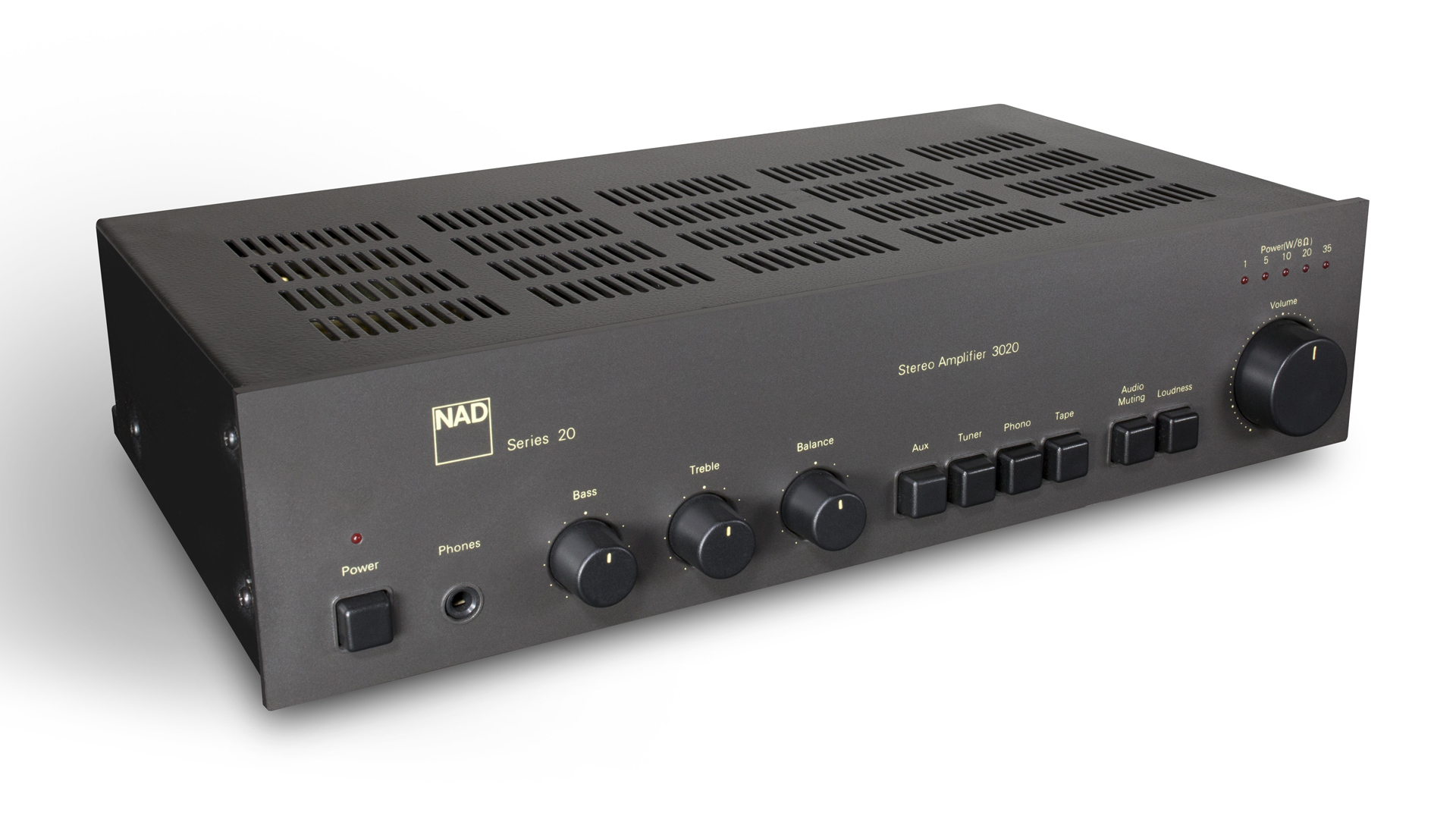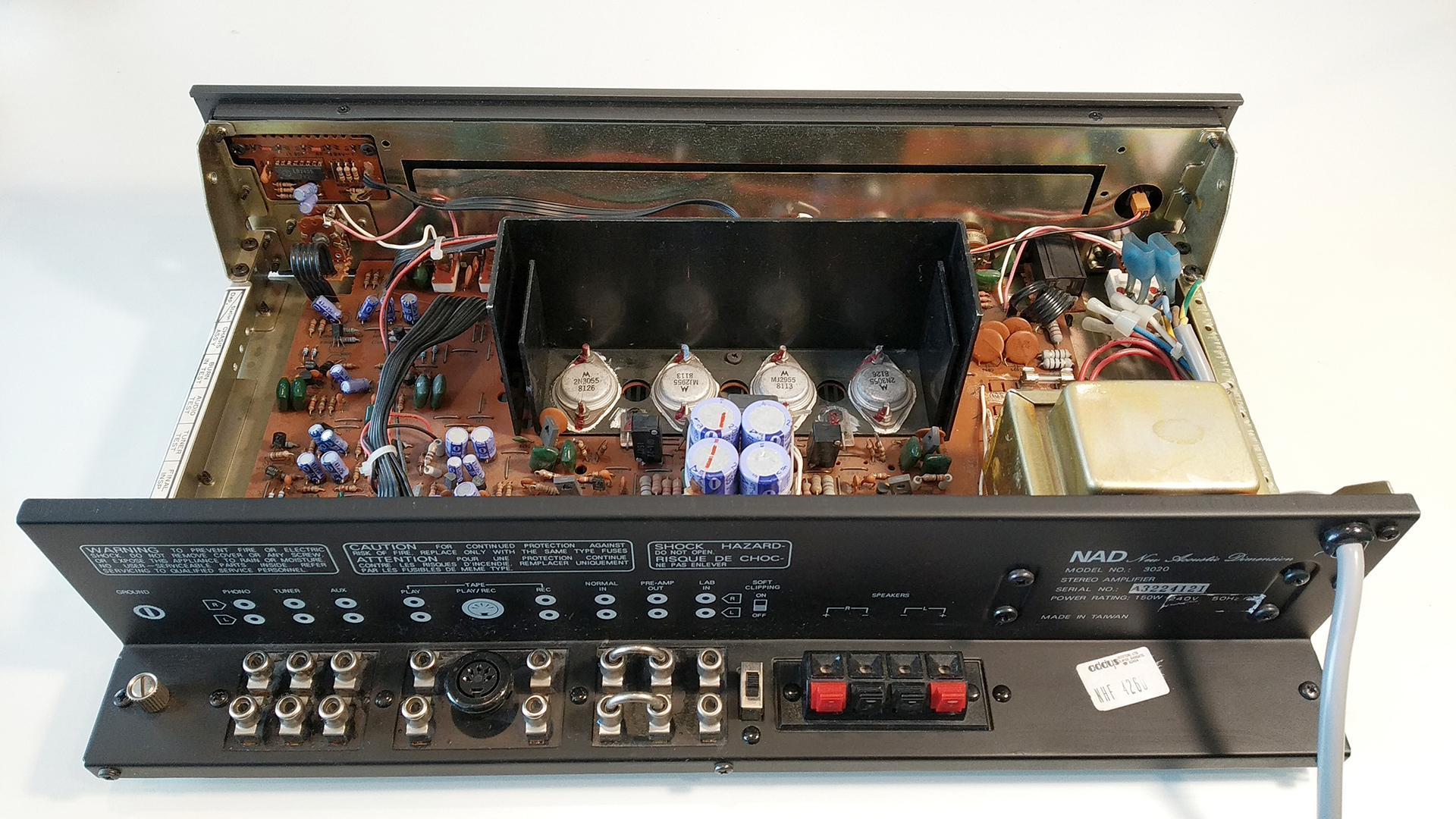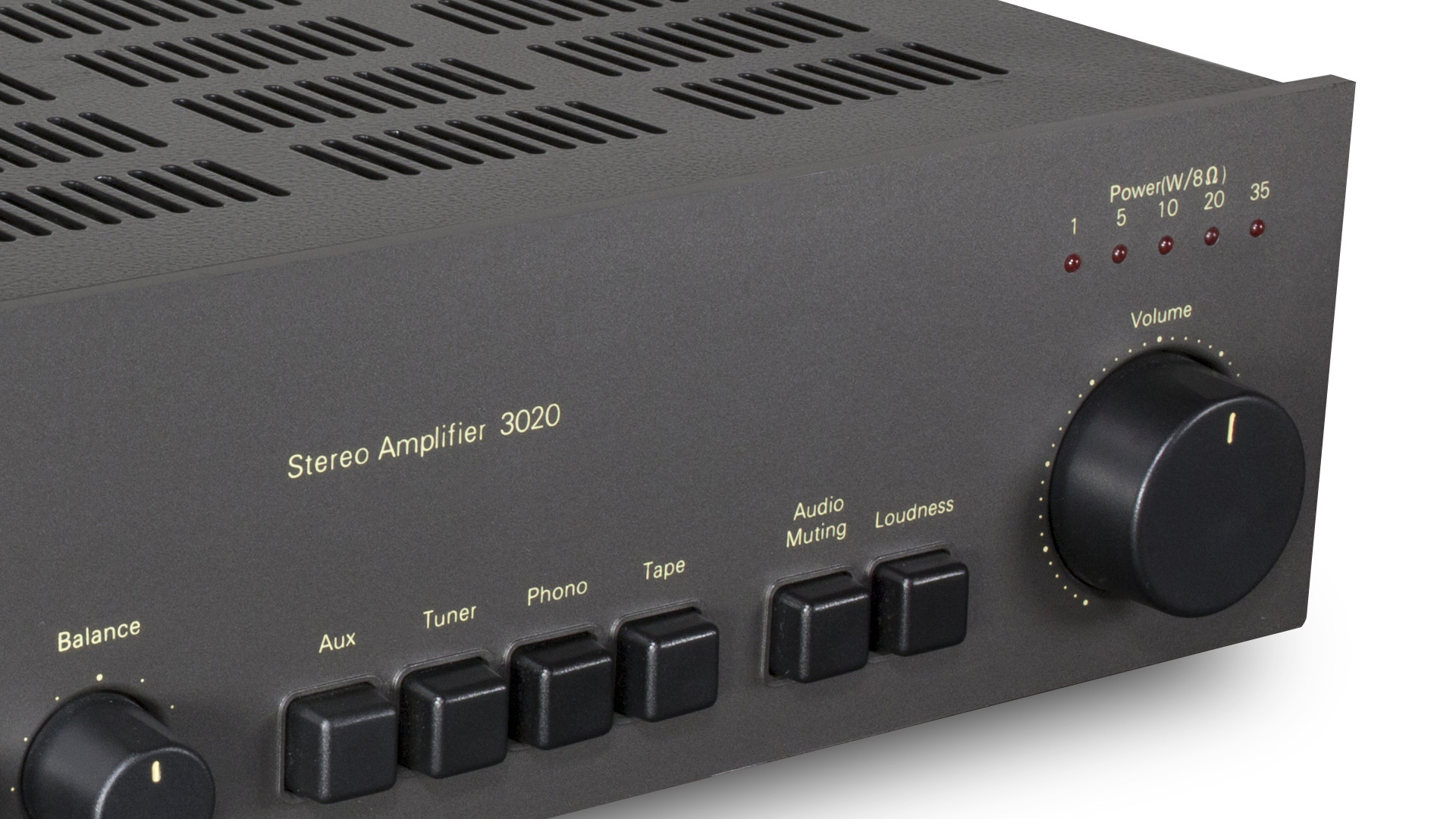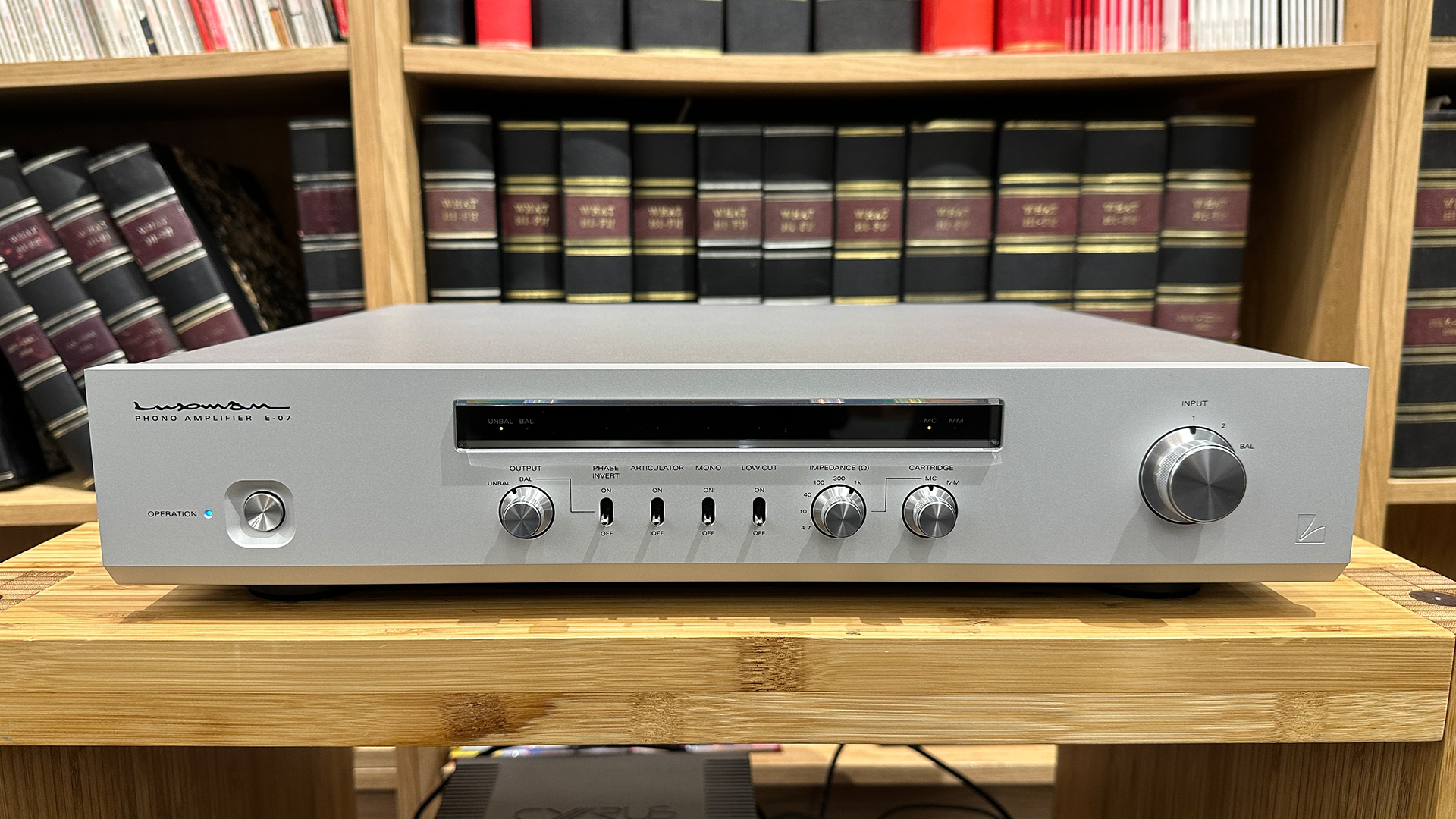That Was Then... NAD 3020
This legendary stereo amplifier established NAD as a serious hi-fi player

If we were to make a list of the most important stereo amplifiers of all time, there’s every chance that NAD’s original 3020 would feature. It is widely claimed to be the best selling integrated amplifier ever, which would be reason enough for it to rate highly on our list, but we believe the 3020’s contribution to hi-fi is about more than mere sales figures.
Launched in 1979, the 3020 cost just £71 and single-handedly established the fledgling New Acoustic Dimension (NAD) brand as a serious player in the world of audio. It wasn’t the first product the company had made, but time has proven it to be the most important by a mile.
The 3020 set the frills-free visual template NAD has followed ever since and established the company as a value-for-money brand. More than that, though, it jump-started the market for high-performance budget amplification.
The NAD 3020 had a clever power supply design that allowed it to sound way more muscular than its modest claimed power output of 20W per channel would suggest. It was engineered to perform well with complex, real-world speaker loads rather than just produce good results in a lab.

The NAD didn’t measure outstandingly, but that didn’t matter as nothing else at the price came close to it in sound quality. Once people had a listen, the 3020’s advantage over the opposition was clear.
It was decently equipped, too. The earliest version came with a moving magnet phono stage, and a moving coil option was added in later generations. There were also two line-level inputs and a tape loop, which was enough at a time when vinyl replay was king. Unusually, the pre and power sections were connected with an easily removable external link, so it was possible to use either separately if the urge to upgrade struck.
Look around the back and there’s an unusual upward-facing connection panel. Here you’ll find a choice of power amp inputs. The one marked ‘Normal In’ is bandwidth limited to remove unwanted noise both below and above the audible frequency range. The idea is to prevent the power amp circuitry from having to do undue work boosting these unwanted signals.
The latest hi-fi, home cinema and tech news, reviews, buying advice and deals, direct to your inbox.
The other power amp input is called ‘Lab In', and is a direct, unfiltered connection. Compare the two and the ‘Lab-In’ certainly sounds a little cleaner and clearer, but also a touch harder-edged with it.

The other feature of note is called ‘Soft Clipping’. The idea of this switchable circuit is to gently limit the 3020’s output when it is being pushed to high volume levels, thus avoiding huge amounts of harshness and distortion. After a quick comparison, we leave the switch off, as the sound becomes a little too soft and compressed for our tastes.
Early in its life, the 3020 didn’t have a great reputation for build quality and reliability. It was considered adequate at best in these respects, but such issues weren’t severe enough to affect its success. As the build got better over subsequent generations, even those nasty spring clip speaker terminals made way for proper speaker cable binding posts.
NAD continued to evolve the design with better sounding, more purist versions that boasted cleaner signal paths by deleting the tone controls and other switches considered unnecessary. The 3020’s circuit was even split to make a preamp-only version called the 1020.

The company kindly supplied us with a pristine early example for this feature and, even after four decades, it looks good enough to have just rolled off the production line. Everything works perfectly, apart from the power LED that refuses to shine.
There’s real pleasure in using something as basic and functional as this. With no remote control, it’s as hands-on as hi-fi gets. The operation of the rotary controls and press buttons can hardly be called sophisticated, but there is a disarming charm about how everything works.
We give the amplifier a few days to warm up and then get down to some serious listening, using a range of sources and speakers from our reference Naim ND555/555PS DR music streamer and ATC SCM50 floorstanders to the more price-appropriate Marantz CD6007 CD player and Dali’s Oberon 1 standmounters. We use a Rega Planar 3/Elys 2 record player to test the NAD’s performance with vinyl, too.
The 3020’s phono stage was much vaunted at the time – and rightly so. It still sounds full-bodied, lively and expressive with it. Noise levels are kept in check, leaving little to get in the way of our enjoyment.

This isn’t a particularly detailed sounding amplifier by current budget standards; things have certainly moved on in terms of clarity, dynamic expression and rhythmic precision in the decades since. But that doesn’t stop the 3020 from being fun. It remains a hugely entertaining proposition with a smooth, big-boned presentation that grips the listener from the first note of a song to the last.
The line inputs share the sonic characteristics of that phono stage. This NAD integrated sounds way more powerful than that paltry 20W per channel power output figure suggests. The 3020’s presentation is meaty and authoritative – it’s a sound with real substance.
While the overall resolution is nothing to get excited about, this amplifier is great at delivering the information it uncovers in a cohesive and musical way. This is the kind of product that just gets out of the way and leaves the music in the spotlight.
Even during its lifetime, there were criticisms that the bass was a little overcooked and stereo imaging wasn’t expansive or particularly focused, and these things are even more obvious today. But, perhaps surprisingly, neither of these shortcomings come close to spoiling our enjoyment.

The stereo imaging issues improved when NAD’s engineers realised they had made a small mistake in the first generation’s circuit board that increased crosstalk between the channels. Once discovered, this was, of course, corrected. Oddly, some reports at the time suggested the amplifier had lost a little of its sonic charm with this revision. There’s no pleasing some people!
No product is perfect, and expecting that from a 40-year old budget design isn’t realistic. However, we are utterly charmed by the 3020. Our test room is packed with excellent, far more capable alternatives, yet we carry on listening to the little NAD way longer than we need to.
We love its enthusiasm and the way it encourages us to play just one more track. That’s the true mark of greatness, and make no mistake, the NAD 3020 belongs up there with the very best the industry has ever made.
MORE:
The best stereo amplifiers of the 21st century

Ketan Bharadia is the Technical Editor of What Hi-Fi? He has been reviewing hi-fi, TV and home cinema equipment for almost three decades and has covered thousands of products over that time. Ketan works across the What Hi-Fi? brand including the website and magazine. His background is based in electronic and mechanical engineering.
